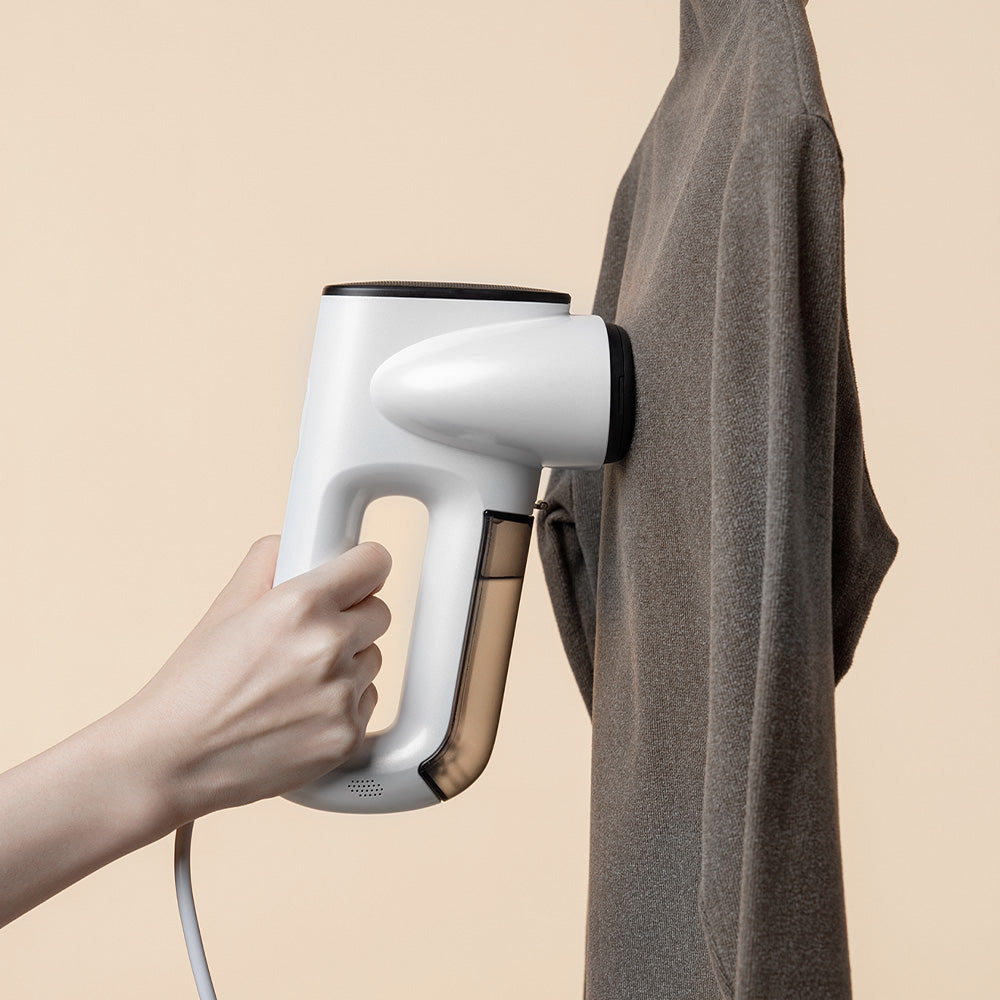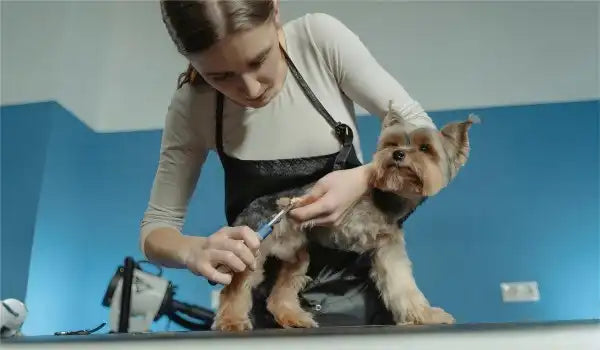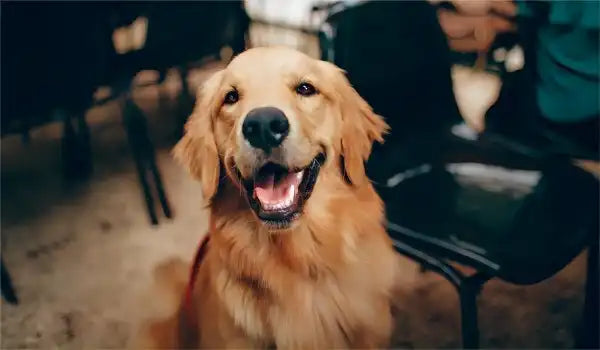
Trimming your dog's nails is more than just a grooming task; it's an essential part of caring for your furry friend's health and well-being.
Just like us, if a dog's nails get too long, they can cause a lot of discomfort. Imagine wearing shoes that are too small and how that would feel all day, every day. That's similar to what overgrown nails feel like for dogs.
Not only can long nails make walking uncomfortable, but they can also lead to more serious issues like altering your dog's posture and putting unnecessary pressure on their joints. This can lead to discomfort and, over time, contribute to joint problems.
So, keeping your dog's nails trimmed is crucial for ensuring they can run, play, and walk comfortably without any pain.
Let's dive into how to trim dog nails safely, ensuring they're always ready for their next adventure.
Understanding Your Dog’s Nails
Understanding the structure of a dog's nail is crucial before you start the trimming process.
A dog's nail consists of two main parts: the hard outer shell and the inner cuticle known as the "quick." The quick is a soft area that contains blood vessels and nerves, making it sensitive.
If you cut into the quick, it can cause pain to your dog and even lead to bleeding. This is why it's important to trim only the tip of the nail, avoiding the quick to prevent discomfort and injury.
Knowing when it's time to trim your dog's nails is just as important.
Generally, if you can hear your dog's nails clicking on the floor as they walk, it's a sign that the nails are too long and need trimming.
Additionally, if the nails are visibly curving over, it's definitely time for a trim.
Regular checks will help you determine the right frequency for nail trims, which can vary based on your dog's activity level and the surfaces they walk on. Dogs that spend more time outdoors on hard surfaces may naturally wear down their nails, requiring less frequent trims than those who spend most of their time indoors.
Trimming your dog's nails regularly is essential for their mobility and comfort. It prevents the nails from curling under and causing walking difficulties or even pain. By understanding the anatomy of your dog's nails and recognizing when it's time for a trim, you can ensure your dog remains happy, healthy, and active.

Image source: https://www.vetcarepethospital.ca/trim-dogs-nails/
Tools You’ll Need to Trim Dog Nails
Having the right tools is crucial for safely cutting your dog's nails. Before you start, make sure you have:
1. Dog Nail Clippers: There are two main types: guillotine and scissor-style. Guillotine clippers are good for smaller breeds and feature a hole where the nail is inserted before the blade cuts it off. Scissor-style clippers are better suited for larger dogs with thicker nails. They work like regular scissors but are specifically designed to cut dog nails.
2. Nail Grinder for Dogs: A pet nail grinder is an alternative to clippers, especially useful for dogs who are nervous about clipping. It gradually sands down the nail, offering a smooth finish. It's great for thick nails and can help avoid the quick more easily.
3. Styptic Powder or Pencil: This is a must-have for stopping bleeding in case you accidentally cut the quick. It helps to clot the blood quickly and reduce discomfort.
4. Treats: Having your dog's favorite treats on hand is essential. They can help your dog associate nail trimming with positive experiences.
5. Flashlight (Optional): If your dog has dark nails, a flashlight can help you see the quick more easily by illuminating the nail.
Ensuring you have the proper equipment will make the nail trimming process smoother and less stressful for both you and your pet.
How to Trim Dog Nails Step-by-Step
1. Prepare Your Workspace
Choose a well-lit, quiet area where your dog feels comfortable. Having good lighting is crucial, especially for identifying the quick in dark nails.
2. Calm Your Dog
Spend some time calming your dog. Pet them, offer treats, and gently handle their paws to get them accustomed to touch.
3. Identify the Quick
Look for the quick in each nail, a pinkish area inside the nail where blood vessels and nerves are. Aim to cut a few millimeters away from it. Avoid cutting this area. For dark nails, look for the point where the nail starts to curve downward, which is generally a safe spot.
4. Start Trimming
Hold your dog’s paw firmly but gently. Clip off a small bit of the nail at a 45-degree angle, cutting from underneath. This angle helps mimic the natural curve of the dog's nail.
5. Use a Dog Nail Grinder (Optional)
If you're using a grinder, gently grind the tips of the nails in circular motions, being careful not to get too close to the quick.
6. Check for Sharp Edges
After cutting, feel the nails for any sharp edges. Use the grinder or a file to smooth them out, preventing your dog from snagging their nails on carpet or furniture.
7. Reward Your Dog
After each nail or paw, depending on your dog’s tolerance, give them a treat and praise. This positive reinforcement helps build a good association with nail trimming.
8. Address Any Accidents
If you accidentally cut the quick, apply styptic powder to stop the bleeding. Comfort your dog to minimize stress.
9. Regular Maintenance
- Regular trimming every 3-4 weeks can help keep your dog’s nails at a healthy length and may gradually recede the quick, making future trims easier.
Remember, patience and positive reinforcement are key. If your dog is particularly nervous or if you're uncomfortable with the process, consider consulting a professional groomer or vet for assistance. This guide aims to make nail trimming a safe and stress-free experience for both you and your pet.
Alternatives to Clipping dog nail
For those looking for alternatives to traditional nail clipping for their dogs, there are a couple of effective methods that can keep your dog's nails at a comfortable length without the need for clipping.
Nail Grinding Tools:
Nail grinder for dogs is a popular alternative, offering a way to slowly sand down the nail instead of cutting it. This can be less stressful for dogs who are nervous about clippers, and it provides a smooth finish, reducing the risk of sharp edges. Grinders are especially useful for gradually approaching the optimal nail length without risking cutting into the quick.

Professional Grooming Services:
If your dog has particularly tough nails. Professional groomers have the experience, tools, and expertise to handle nail trimming efficiently, and they can also offer additional grooming services that contribute to your dog's overall wellbeing. Moreover, vets often provide nail trimming services, combining care with a health check-up.
These alternatives not only ensure your dog's nails are kept at a healthy length but also prioritize the safety and comfort of your pet during the grooming process. Whether you choose a grinding tool for at-home maintenance or opt for professional grooming services, the key is finding the method that works best for you and your dog, ensuring their paws remain in good health.
Common Concerns and Solutions
1. Fear of Cutting the Quick:
Many pet owners are afraid of accidentally cutting into the quick, which can cause pain and bleeding.
- Solution: Start by trimming small amounts of the nail at a time, especially if you're new to nail trimming. Using a light source beneath the nail can help identify the quick in lighter nails. For dark nails, trimming in several small sessions allows the quick to recede gradually, reducing the risk over time.
2. Dog's Fear and Anxiety:
Some dogs are naturally anxious about having their paws handled or react to the sound and sensation of nail clippers.
- Solution: Gradual desensitization is key. Begin by regularly massaging your dog's paws and rewarding them to build positive associations. Introduce the nail clippers or grinder in a non-threatening way, allowing your dog to sniff and investigate the tools before using them.
3. Restlessness During Trimming:
Keeping a dog still during nail trimming can be a challenge, especially for energetic or nervous dogs.
- Solution: Exercise your dog before the trimming session to help them burn off excess energy. Consider enlisting a helper to gently hold and reassure your dog while you trim, or use treats and praise to keep them focused and calm.
4. Uncertainty About Nail Length:
Knowing how much nail to trim can be confusing, particularly for dogs with dark nails where the quick isn't visible.
- Solution: As a general rule, the nail should be trimmed to just above the ground level when your dog is standing. For dark nails, trim gradually until you see a small dark dot appear in the center of the nail, which usually indicates you're close to the quick.
5. Lack of Proper Tools:
Using inappropriate or dull tools can make nail trimming more difficult and uncomfortable for your dog.
- Solution: Invest in a quality pair of nail clippers or a grinder designed for dogs. Ensure the clippers are sharp and in good condition to make clean, quick cuts.
6. Handling Accidents:
Even with the best preparation, accidents can happen, and the quick may be cut.
- Solution: Keep styptic powder or a styptic pencil on hand to quickly stop bleeding. Apply gentle pressure to the nail with the powder if bleeding occurs. Comfort your dog to reduce their stress and anxiety about future nail trims.
Conclusion
Trimming dog's nails safely is achievable with the right approach, tools, and patience. Understanding common concerns and knowing how to address them can help turn nail trimming from a daunting task into a regular part of your dog's grooming routine, ensuring their health and happiness. Remember, practice and positive reinforcement go a long way in making nail trimming a positive experience for you and your dog.







Leave a comment
This site is protected by hCaptcha and the hCaptcha Privacy Policy and Terms of Service apply.